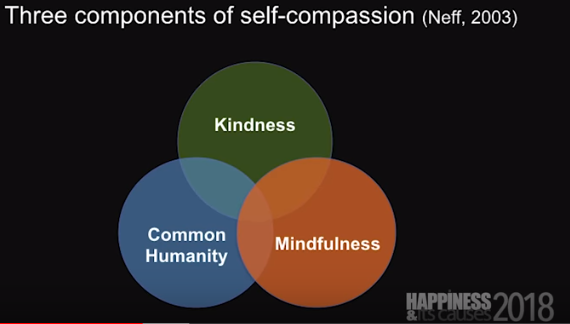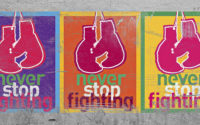Compassion Focused and Energy Healing Therapies [Lipedema]
Exercise is one great way to help tone essential muscles and stimulate lymphatic fluid movement. Did you know there are therapies or exercises we can use to help our emotional and spiritual self handle the devastating demands Lipedema and Lipo-Lymphedema can place on our bodies? In this article we will explore some compassion focused and energy healing therapies [Lipedema] that have been demonstrated to aid in the healing of our mind, emotions, spirit and physical bodies.
Many adopt a holistic approach to treatment while others are meant to augment current medical and therapeutic techniques that promote healing and recovery. Let’s explore:
- Tapping
- Laughter Yoga
- Meditation
- Reiki
Tapping
I have recently “tapped” into a new technique to help calm anxieties and lower my stress levels. Nick Ortner. of the Tapping Solution, is one of the experts in this relatively new field that bridges old Chinese rooted healing techniques with Western medicine to bring relief to the body. (1)
What is Tapping?
Emotional Freedom Techniques (EFT), or Tapping as some refer to it, is a relatively new field of Energy Psychology which is being evaluated and used by healers, scientists, spiritualists and lay people to release energy blockages that serve as the source of emotional negativism and unrest. The goal of EFT or Tapping is to release those harmful energy blockages and restore harmony to the body and mind.

This “Psychological Acupressure” releases the energy blocks by addressing the underlying cause of the emotional or physical malady, which can be a lack of confidence, self esteem, anxiety or depression, or compulsive and addictive behaviors. (2) Your emotional and physical states are connected. Disharmony in one side can negatively impact the other side. Given this connection, medical professionals are now accepting that EFT therapy can have significant positive impacts on addressing physical ailments, particularly chronic illnesses. EFT is now starting to be used as a tool by both medical and psychiatric professionals as a healing tool in psychotherapies.
How Does it Work?
Tapping essentially uses an acupressure technique by the fingertips on the key meridian endpoints found in the body while focusing on the specific problem you want to address. The kinetic energy sent by the fingertip pressure helps force a realignment of our energy system, thereby unblocking paths of learnt responses or negative emotions.
Somewhere along the line we forgot that our body runs on electrical energy. There is great power within us when the energy flow is operating normally. However, the more out of balance it is the more emotional and physical are our problems. It has taken Western medicine a long time to harness this powerful technique has been used in Chinese culture for over 5,000 years! EFT has only gained momentum in the United States since Gary Craig started using the technique on patients in the 1990’s. The relief gained from this obscure Eastern technique ranged from patients with trauma, abuses, phobias, self-sabotaging behaviors, anxieties, depression, addictions, and physical illnesses. (2)
Nick Ortner explains “…the scientific field of epigenetics is proving, when you change your internal environment – your emotions and beliefs – external changes in your mental & physical health will follow.” (3)
Benefits of Tapping
- You have the power to heal yourself. (For advanced situations you may need the assistance of an experienced EFT professional.)
- There are no drugs or medical equipment required.
- It is a relaxing and proactive step to start you on your healing journey.
- It may work when no other therapies or medications can help.
- You can get prolonged, sustained healing effects from your symptoms.
Running Through the Tapping Sequence
I have outlined textual the tapping sequence in the next section. However, it might be better to first visually see it in action before stepping through your custom solution. You may find this to be a very easy yet powerful technique you can use whenever you need to instill calm and positive energy flow in your day.
You can also see a diagram of the endpoint meridians where you need to perform the tapping sequence.
EFT or Tapping in Action

Tapping is done using light pressure like you are tapping your fingers on a tabletop. Be sure to use your fingertips and not your nails to apply the correct pressure. You can use two or four fingers. Two fingers will work better when you reach your facial points. You can also use two hands to tap both sides of your body or alternate sides when/if you make multiple passes.
Let’s step through a tapping sequence designed to identify our root problem(s) and how to unclog blocked energy channels.
- Identify the problem giving you the most emotional or physical pain.
- Rate the intensity of the pain, using a 0 to 10 scale with 10 being the worst pain.
- Compose your setup statements. It defines exactly what is bothering you followed by affirmation of love and acceptance.
- Start the tapping sequence:
- Begin the tapping sequence at the “karate chop” of your hand using either two or four fingers. (Outside palm area directly opposite your thumb.) Tap gently on your “karate chop” about 7 times while repeating your statements three times.
- Move to the second tap point, the inner part of your eyebrow, tap 6-7 times while repeating one of your key statements.
- Move to the third tap point, the area near the outer part of your eyes, tap 6-7 times while continuing to repeat one of your key statements.
- Move to the fourth tap point, the area under each eye,
tap 6-7 times while continuing to repeat one of your key statements . - Move to the fifth tap point, between your nose and lip, tap 6-7 times while continuing to repeat one of your key statements.
- Move to the sixth tap point, on your chin, tap 6-7 times while
continuing to repeat one of your key statements. - Move to the seventh tap point, on your collarbone, tap 6-7 times while continuing to repeat one of your key statements.
- Move to the eighth tap point, under each arm, tap 6-7 times while continuing to repeat one of your key statements.
- Move the ninth and final tap point, the crown of your head, tap 6-7 times while continuing to repeat one of your key statements.
- Take a couple deep breaths.
- Now that you have identified the negative feelings and beliefs, you need to repeat the tapping sequence using points two through nine with positive affirming statements that counter your negative emotions.
- After a round of tapping, evaluate how you feel? Does the pain or anxiety feel reduced? Repeat this process as many times as needed until you feel the pain or anxiety subside. You can change up your statements to reflect your evolving feelings.
Most of the time this is all you need to help alleviate pain, anxiety or any other negative energy. This is designed to not only to instill “positive thinking” but to change your body’s biochemistry by moving positive energy along your meridian channels.
My Personal Experience With Tapping
You need to use the same nine points, or meridian ends, in the same order to help achieve calm when negative energies get overwhelming. I generally use two fingers, my index and middle, to do all my tapping. I only use one hand on the “karate chop” area, but two hands on all other points (on either brow, outside the eye, under the eye, etc.).
My negative statements usually sound something like this:
- “Even though I’m really fat and struggle to lose weight/am disabled, I deeply and completely love and accept myself” (karate chop point.)
- “I am so fat” (eyebrow point)
- “I am struggling so hard with my weight” (side of eye point)
- “I am disabled by my weight and size” (under eye point)
- “I feel worthless because I’m so fat I can’t help my family” (under nose point)
- “I feel like I am burden to my family” (chin point)
- “I feel like I am burden to my friends” (collar bone point)
- “I struggle with my self-worth” (under arm point)
- “I feel like I’m worthless.” (top of head point)
Now I repeat the tapping sequence a second time. This time I use positive reaffirming statements to counter the negative feelings and beliefs from the first round of tapping. It sound something like this:
- “Even though I’m so heavy” (eyebrow point)
- “And I am too disabled to cook and clean” (side of eye point)
- “Even though I can’t do much or lose weight” (under eye point)
- “I am trying to lose weight” (under nose point)
- “I believe I can lose weight eventually with the right help” (under chin point)
- “I still matter, even if I’m fat” (collar bone point)
- “I am worthy of respect and self-love even if I am so fat/disabled.” (under arm point)
- “I’m worthy, and I deserve better” (top of head point)
Usually after a round or two I can feel my stress levels go down a level or two and my mind and body are more relaxed and peaceful. Give it a try! You have nothing to lose…except pain, anxiety and a bunch of negative energy clogging your central energy pathways!
Laughter Yoga
You’ve heard laughter is the best medicine. Well, this takes laughter to the next level and shows us how to use laughter in body-mind wellness therapy. I’ll admit I never heard of this therapy until Catherine Seo at the Lipedema Project covered this topic in one of her Lipedema MasterClass sessions.
Laughter Yoga is a novel, but simple, concept that is gaining popularity as an exercise therapy to promote whole body well-being. It was developed by a medical doctor from India, Dr. Madan Kataria, and it has spread across 100 countries. He even has an official university where these techniques are taught to laughter leaders and teachers.
Scientific Proof
When we laugh, I mean really laugh, we inhale deeply which oxygenates our brain thus creating more energy and vitality for our body. It is similar to getting aerobic exercise or mini cardio workout.
Studies in India and the United States have shown laughter lowers the level of stress hormones (epinephrine, cortisol, etc) in the blood up to 28%. It is also shown to reduce systolic blood pressure numbers by 6%. (4)
Laughter Yoga can reduce stress and strengthen your immune system. This will reduce your chances of getting sick easily and even heal faster if you have some chronic illnesses. It can also alter your mental state when dealing with negative emotions and situations, providing a great coping mechanism of hope and optimism during difficult times.
Are you a grumpy person, especially first thing in the morning? Laughter Yoga can readily change your mood as the brain releases endorphin chemicals into your system. Endorphins are known as the “feel good” hormones that block pain receptors and create an analgesic type of feeling. This will give you a more cheery and easy-going mood for your day.
Laughter Yoga is also contagious. Laughing and being cheery will attract more friends and create a more positive atmosphere. Laughter can also improve key relationships by diffusing tensions and creating more harmony.
Individual and Group Therapy
Meditation
Meditation can be a powerful tool to help calm, relax and realign your mind-body connection by turning our attentions and thoughts inwards and focusing on things like self-love, self-compassion, self-kindness and mindfulness. Mindful meditation is a technique or tool we can use to purposely enhance our mind-body connection thus invoking strong healing energies not only for the physical illnesses but also for crippling mind states. Our goal is achieve the strongest mind-body connection and put our spirits in the most loving, peaceful, harmonious and blissful state possible.
For many of us with lipedema we experience many physical aches and pains, but we also experience mental pain through body dissatisfaction and fat shaming. Not only do we need to treat the physical side of this debilitating disease, but we need to treat and heal the mind and spirit side too.
Regular meditation usually entails one to sit on the ground with legs crossed, spinal column aligned and in a relaxed position. Those with lipedema, especially more advanced stages of lipo-lymphedema, cannot readily get up and down from the floor nor cross big heavy legs. Even if sitting on the floor and crossing the legs is possible, it may not be comfortable or relaxing to remain in this position for meditation.
The goal is to find a position that is comfortable so that you can focus on inward feelings and mindful thinking. It can be in a comfy chair or even sitting or reclining in your bed. You should not be distracted by any pain or discomfort in your chosen position, but rather in a loose and relaxed place.
Affectionate Breathing
Kristin Neff, an associate professor at the University of Texas at Austin, was the first Western researcher to explore the importance of self-compassion from Buddhism roots and incorporate it into a mindful meditation practice. She has developed a mindful breathing technique called affectionate breathing where it focuses not only on compassion for others, but on self-compassion.
Compassion is a very strong and motivating feeling. It removes the judgmental aspect of viewing a person and their situation and allows you to suffer alongside them. In this manner you can feel their pain, their sense of suffering and perhaps even their sense of hopelessness. Now that your heart is open you can offer understanding and kindness rather than pity. It makes you want to help in any means you can to ease that suffering even if it is just acknowledging that the failures, shortcomings and imperfections are just our shared human experience. (5)
Self-compassion is essentially taking the compassion we have for others and turning that inwards on our self. Do you judge yourself too harshly? Do you overreact to every flaw, imperfection and failing in your life? Do you regularly have feelings of low self-worth or that no one could love you because you are flawed beyond repair? If so, you are definitely in need of self-compassion therapy.

Self-compassion is comprised of three key elements: mindfulness, kindness and common humanity. All three elements need to be present for self-compassion to work. Mindfulness helps us become aware of the issue and provides perspective. Kindness allows us to respond in a non-harsh or judgmental manner. Common humanity tells us we are not experiencing our events or feelings in isolation. We need to recognize so many others are sharing these feelings and experiences and we are not alone in our struggles!
You are not perfect and neither is any one else! You need to remove harsh judgments about your body size and type and how much this disease has ruined the direction you wanted to go in life. Focus instead of what you can do to make yourself happy and healthier. Be kind and gentle towards yourself just like you would be to others suffering with this health condition!
Affectionate breathing has you assume a relaxed and comfortable position. Take note of your breathing and let your mind wander. After a few good breaths refocus your mind on your breathing. As you take a long slow breath in you will focus on compassion for yourself. When you exhale a long slow breath you will focus on compassion for others facing life with this disease too.
Kristen has several meditative breathing exercises for you to explore in addition to affectionate breathing, which is probably the best place to start.
Reiki
Reiki is a Japanese technique that emerged in the 1800s that promotes stress reduction and relaxation, and promotes healing. From the Japanese word “Rei” meaning “God’s Wisdom or the Higher Power” and Ki meaning “life force energy” we derive Reiki as a “spiritually guided life force energy.” (6)
Reiki is taught worldwide with Reiki Masters transferring the ability for the student to tap into an unlimited supply of “life force energy” through an “attunement” process. It involves the “laying on of hands” to tap into an unseen “life force energy” that flows through all of us fueling our very life. When our “life force energy” is low, we tend to be sick or stressed, and when it is high, we are apt to be happier and healthier.
A Reiki treatment is designed to treat you in a holistic approach, meaning it affects your body, mind, emotions and spirit. When all aspects are treated and in harmony, you will feel more relaxed, peaceful, secure and have a general sense of health and well-being. Many have reported positive, and even miraculous, results in treating a variety of physical and mental illness.
Reiki is a simple and safe technique to use in healing and improving one’s overall health. While there is a foundation of spirituality in its guiding principles, you don’t need to necessarily spiritual or religious to employ it. However, people have found that using Reiki has helped them experience their religion at a deeper level. In fact, promoting peace and harmony within yourself and with others is a universal concept found across most cultures and religions around the world.
You can receive Reiki therapy from a licensed Reiki Master or a student that has been properly attuned. You can also learn Reiki yourself from a local Reiki Master via a certified training class where you can then treat yourself and others by tapping into the unlimited supply of “life force energy.” You can also request a free distant Reiki healing!
Compassion Focused and Energy Healing Therapies [Lipedema] Conclusion
Medical treatments and select exercises can do wonders in helping manage the physical aspects of our Lipedema, Lymphedema or Lipo-Lymphedema and co-morbid conditions. However, we must also effectively treat our mind, spirit and emotions in a more holistic approach to healing and recovery.
We have learned that opening up internal energy pathways, promoting more self-compassion and sharing our common struggles with others can greatly help us promote peace and harmony within our bodies. The mind and spirit are powerful forces that are rarely tapped to aid us in healing journey. When we combine traditional medical treatments with non-physical therapies we can further our healing and recovery process in a more holistic approach.
I hope the above listed compassion focused and energy healing therapies [Lipedema] have given you some options to further your management and healing from Lipedema. Lymphedema, or Lipo-Lymphedema and related co-morbid conditions. While I have no personal affiliation with any of the organizations, some of these have personally helped me in my overall healing process and improved my general health substantially.
Please drop me a comment below and share what non-physical or non-conventional healing therapies have helped you on your recovery journey.
To your improved health!
Resources:
- Yoga International – The Real Meaning of Meditation
- Self-Compassion.org – Self-Compassion Guided Meditations and Exercises
- Reiki – Reiki Resources
- US National Library of Medicine National Institutes of Health – A Consideration of the Perspectives of Healing Practitioners on Research Into Energy Healing
- Fat Disorders Resource Society – Quality of Life and Psychological Functioning of Patients
References:
- (1) The Tapping Solution – The Tapping Solution
- (2) The Energy Therapy Centre – What is EFT?
- (3) The Tapping Solution – Tapping 101
- (4) Laughter Yoga University – What is Laughter Yoga & How can it help you?
- (5) Self-Compassion – Self-Compassion
- (6) Reiki – What is Reiki?


